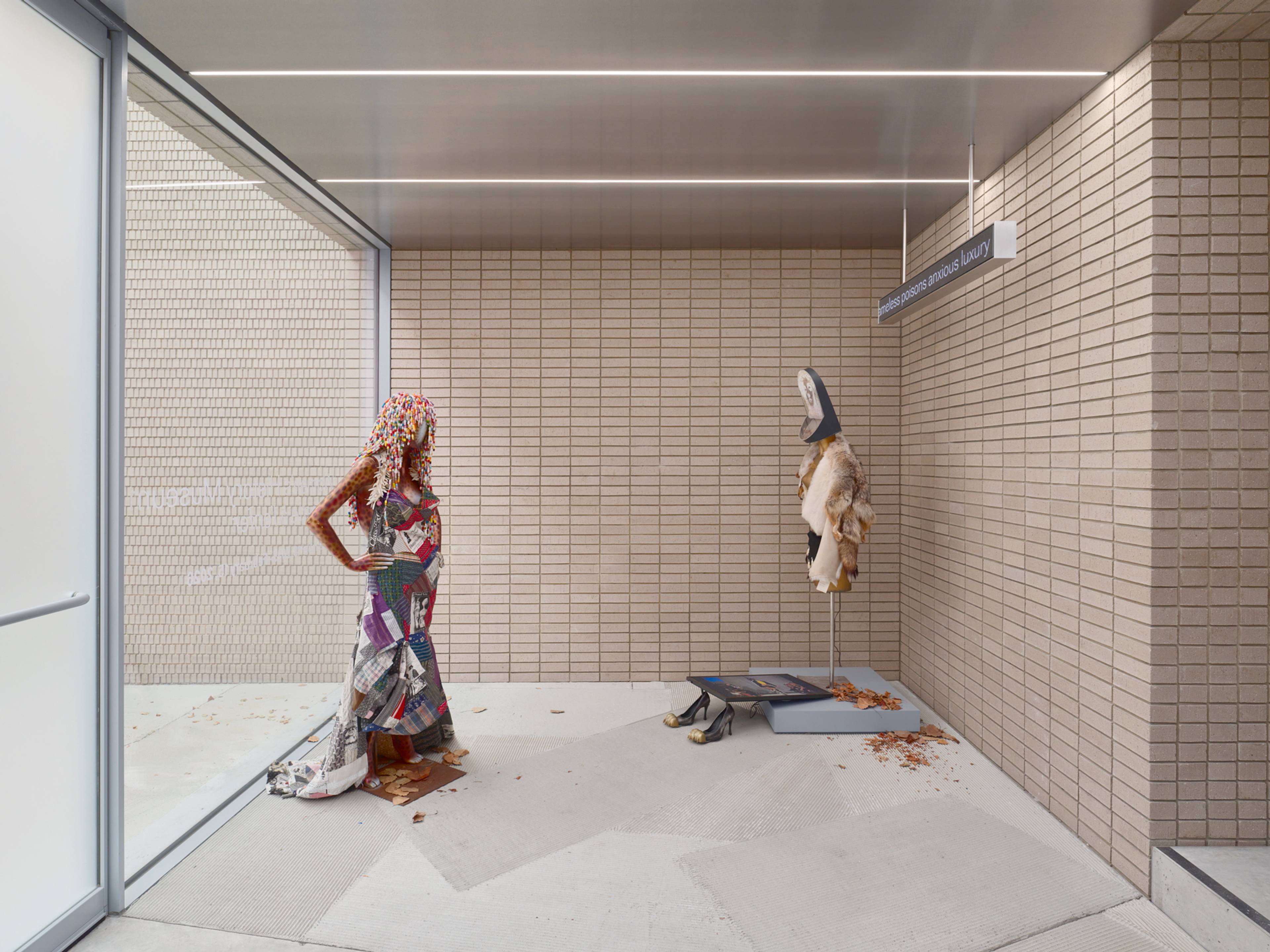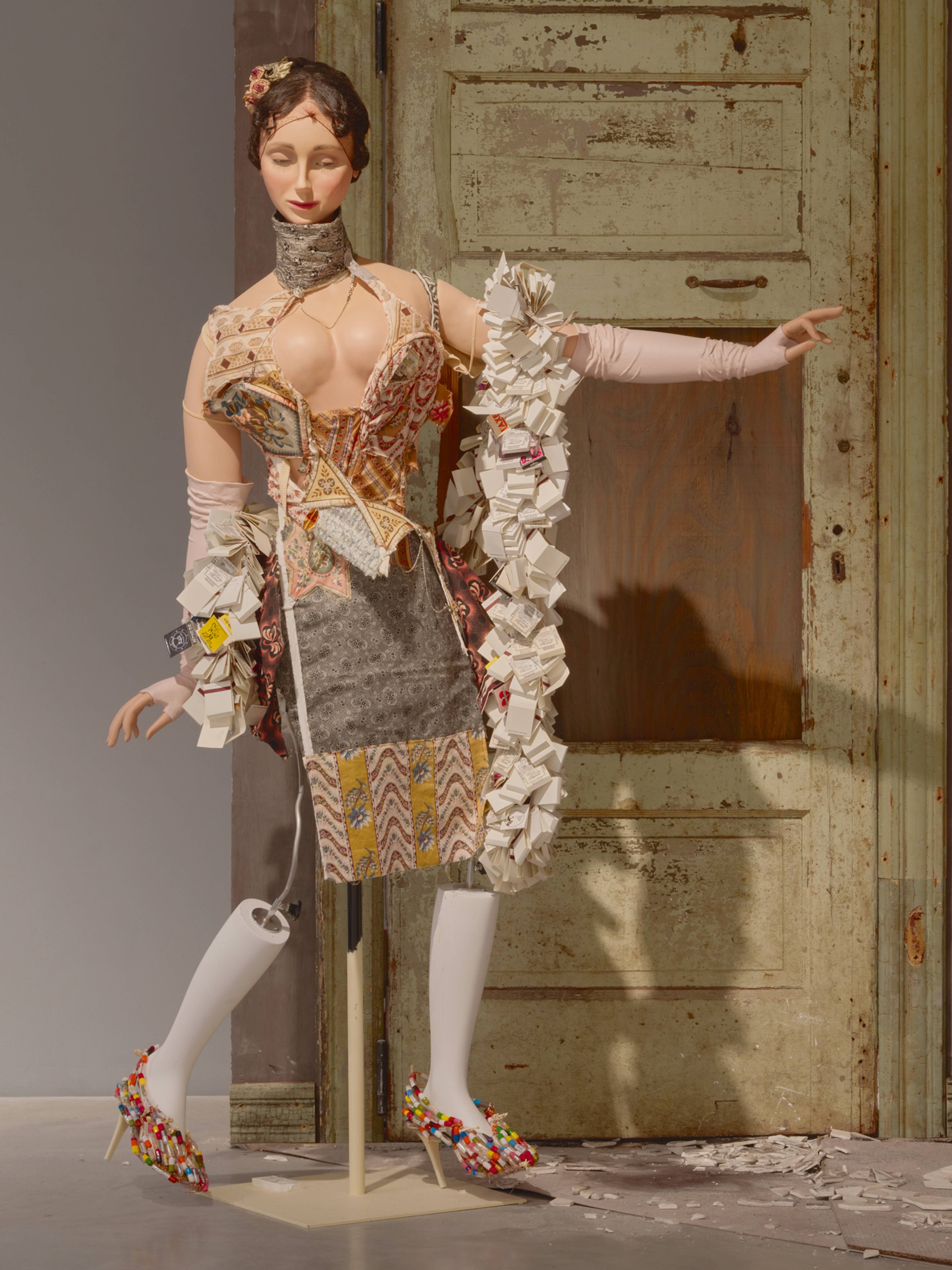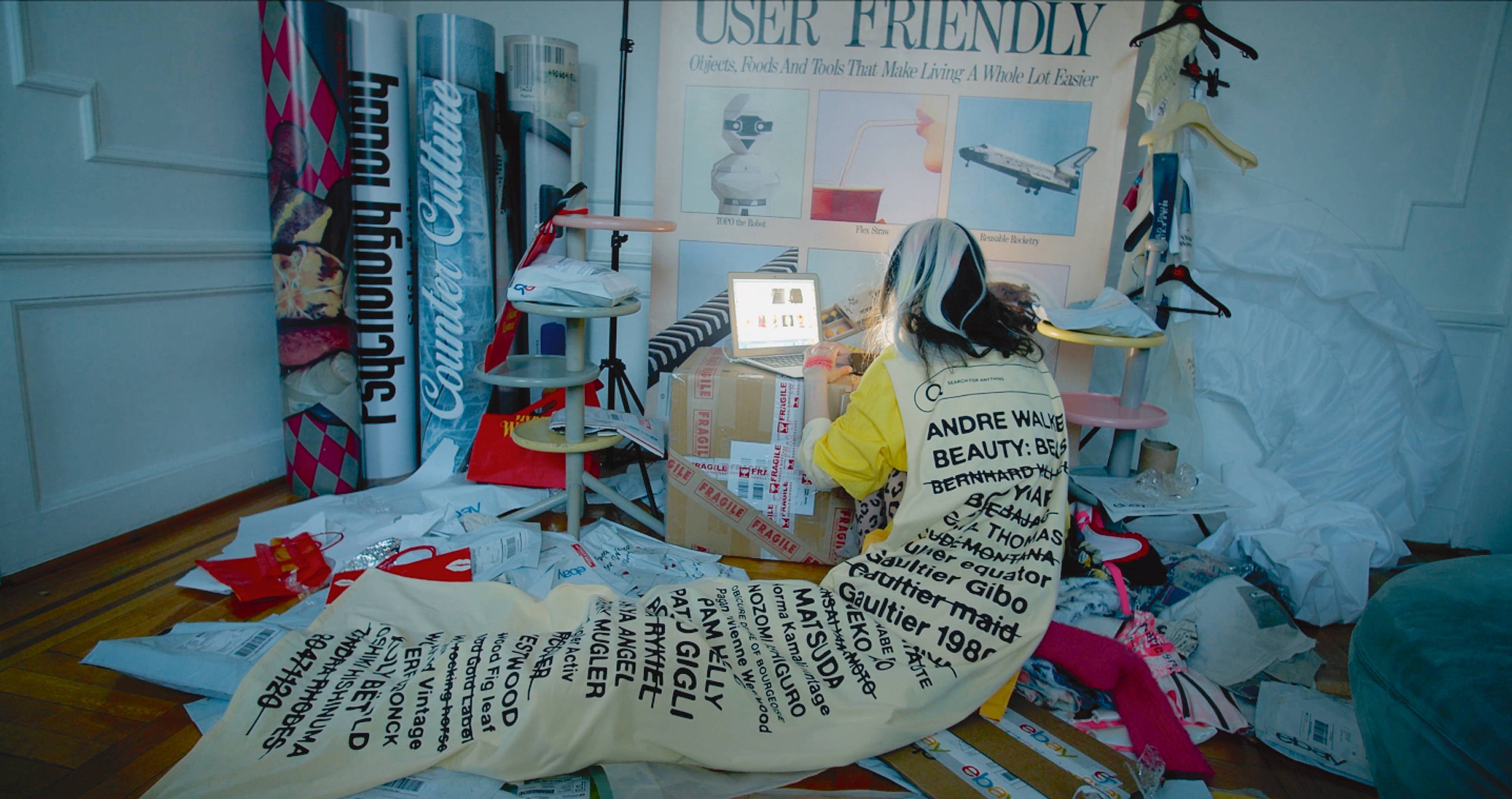“My story is brief. I embroider silk and satin at home or outside,” sings Mimì in the libretto of Giacomo Puccini’s 1830s-set La bohème (1895). “I love all things that have gentle magic, that talk of love, of spring, that talk of dreams and fancies … Do you understand me?” Mimì is the type of woman animated by “Grisette à l’enfer” (Grisette in Hell), a new exhibition from the art collective and experimental fashion label Women’s History Museum: poor, waifish, and at once scorned and romanticized as the forgotten labor of fashion in an ever-shifting French Republic.
US, collaborators Mattie Barringer and Amanda McGowan (both *1990) stuff a room at Amant, an arts foundation in industrial Brooklyn, with the detritus of a luxury commercial wasteland. Styrofoam mannequins wrapped in a gauzy concoction of porcupine quills and sugar cubes; a leopard-printed mannequin fraternizing with taxidermied doves; couture mannequins draped in mother-of-pearl casino chips and bobcat fur: these grisettes, girls named in the 17th, 18th, and 19th centuries for the gray dresses they wore to sell flowers or sew finer things, lurk and loom over other props, such as a video screen that rests on a pair of pom-pom heels. The jutting limbs and unnerving smoothness of the mannequins – one manufactured for a sex store, most of the others on loan from the Metropolitan Museum of Art – are not just vehicles for displaying wearable art, but are themselves haunted sculptures.
I wonder if I’d seen these exact mannequins before, as they belong to the Costume Institute at the Met, whose tawdry efforts the last few years are cause enough for avoiding museum fashion exhibitions, like the consumption that killed Mimì. I tend to leave them feeling sad for the clothes, like I want to free them from their temperature-controlled holding cells, so devoid are they of the life that makes a garment interesting. This year’s Met Gala raised a record $31 million for the Institute’s operating costs; but judging by the scratch-and-sniff activations for last year’s “Sleeping Beauties,” as well as the endlessly meme-able “Camp: Notes on Fashion” (2019), it’s evident, yet again, that lots of cash does not necessarily an inspired exhibition make.
“Grisette à l’enfer” is the scrappy sister making do. There’s so much to say about clothes right now, but not about a Dior suit behind layers of glass. What do unworn wools know about desire? Or blood stains? Or credit card debt? Barringer and McGowan enact a shattering – quite literally, with jackets encrusted with shards of green safety glass, and more generally, with a relentless aesthetic of mess. There’s clutter both in the show’s composition and in the clothes themselves, held tenuously together with strings of pennies or strips of fabric. They’re not meant to be easily worn, unless you think you can walk in two-meter wooden platform heels, or are willing, like a romantic, to spill your shopping bag of borrowed cash across the pavement. By enshrining the grisette figure, Women’s History Museum captures a feral femininity that persists in garment districts of today’s fashion capitals, as unpaid interns skitter about unmarked commercial buildings in search of raw denim at a reasonable price.
Still from The Massive Disposal of Experience, 2022, two-channel video, 44:26 min
The show also includes a few other mediums not quite as skillfully executed as the sculptures: a garish collage; a scrolling LED display of nonsense text (“The rapture while wearing beautiful blinding gowns made of hilarious materials keep these shoes as a souvenir of what was lustful…”); a suite of videos. The two-channel film The Massive Disposal of Experience (2022) chronicles a cyborgian avatar “obsessed with clothes in a world where clothes are no longer relevant or disappearing.” She asks in voice-over, “Do you know how many fashion designers have committed suicide? A lot. Besides, people only want things they’ve already seen. They don’t want something new.” Like Mimì, she feels misunderstood for her lust after aesthetics, and for wanting to be close to the sexiness and power fashion can hold – an experience the rest of society affords neither time nor space. Women’s History Museum gives it to her, and bountifully, if only to more properly lay her to rest.
Women’s History Museum
“Grisette à l'enfer”
Amant, Brooklyn
18 Sep 2025 – 15 Feb 2026





